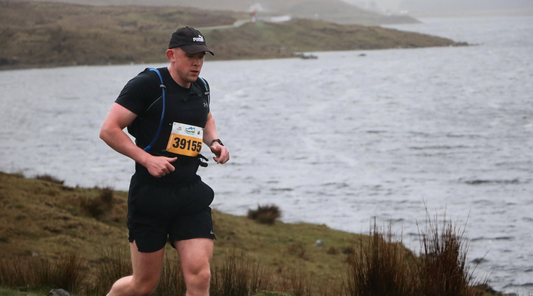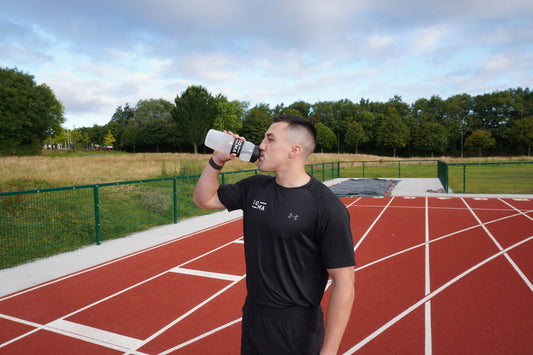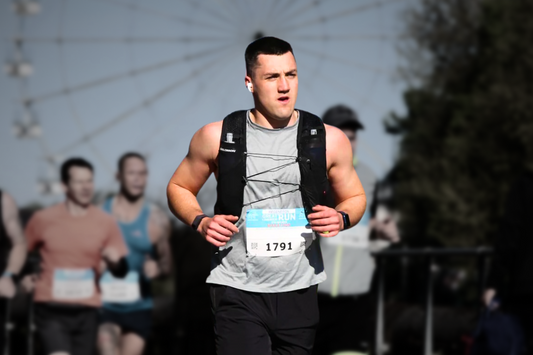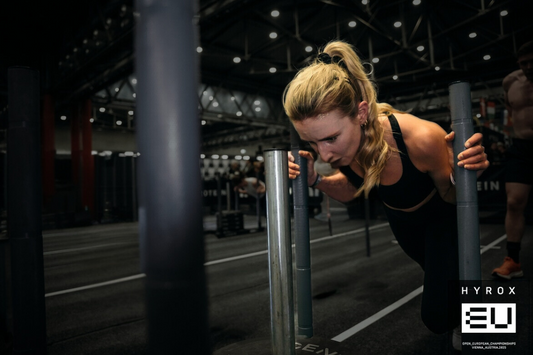Most training plans account for volume, intensity, and recovery. But hydration is often treated as an afterthought.
Even among dedicated runners, lifters, and hybrid athletes, hydration strategies are usually too vague, too generic, or just not aligned with the actual demands of training. And when hydration falls short, it doesn’t just show up in fatigue or cramps - it affects performance, focus, and recovery across the board.
This isn’t about drinking more water. It’s about understanding why most hydration strategies miss the mark, and how to build one that supports your training instead of holding it back.
1. Generic Guidelines Don't Match Training Demands
Most public health recommendations around hydration are based on average needs - aimed at people with minimal physical output. For someone doing multiple weekly sessions, running long distances, or training in heat, those recommendations simply don’t apply.
Drinking 2–3 litres of water a day might meet baseline fluid needs, but it won’t sustain performance when training volume ramps up or environmental stress increases. For high-output individuals, hydration strategies need to be tailored, not templated.
2. Underestimating Sodium Loss
Sodium plays a central role in hydration - it helps retain fluid, regulate muscle contractions, and maintain nerve function. But it's also the primary electrolyte lost in sweat.
Sweat sodium losses vary significantly across individuals, ranging from 500 to over 2,000 mg per hour, depending on factors like genetics, fitness level, and heat adaptation. Yet many popular electrolyte products provide less than 300 mg of sodium per serving - far below what's needed to replace real losses.
When sodium isn't replaced adequately, the result isn’t just thirst, it’s reduced endurance, muscle cramps, slower recovery, and in some cases, hyponatremia.

3. Poor Timing
Many athletes wait until halfway through a session (or after) to start thinking about hydration. By then, the opportunity to stay ahead of losses is already gone. Strategic hydration is proactive, not reactive.
Front-loading hydration - taking in fluids and electrolytes 60 to 90 minutes before training - can help support blood volume, maintain energy output, and delay fatigue.
4. Ignoring Environmental Variables
Hydration needs aren’t static - they shift with temperature, humidity, session duration, and intensity.
Someone training indoors for 45 minutes needs a very different strategy than someone running outdoors for 90 minutes in summer heat. Without adjusting intake to match sweat rate and climate, most hydration plans either fall short or overshoot.
Estimating sweat loss through pre- and post-session weigh-ins can offer valuable insight. If you're regularly losing 1–2% of your body weight in a session, you likely need to rethink your approach.
5. Confusing Fluid Intake with Hydration
Hydration is about balance, not just volume.
Drinking litres of plain water without adequate electrolytes, especially sodium, can actually dilute blood sodium levels and lead to symptoms like nausea, dizziness, and fatigue.
Proper hydration supports fluid retention and electrolyte balance, not just fluid intake. Water alone, especially in high volumes, won’t achieve that.

6. Relying on Thirst
Thirst isn’t always a reliable guide.
It tends to lag behind actual hydration needs, especially during longer or more intense sessions. By the time you feel thirsty, your performance may already be affected.
Instead, regular intake based on session type, duration, and known sweat losses tends to produce better outcomes in energy, concentration, and recovery. In long sessions, especially in heat, thirst should be viewed as a safety net, not the primary signal.
7. Getting the Electrolyte Ratios Wrong
Not all electrolyte products are built for performance.
Many are designed to appeal to a general wellness market, prioritising potassium or magnesium for marketing appeal, and cutting back sodium to avoid “too much salt”. But that’s not what training demands.
Sodium is the key electrolyte lost in sweat. An effective product should reflect that, with a high-sodium, performance-first formulation, not a watered-down blend aimed at casual users.
Potassium, magnesium, and calcium do play supporting roles, but they’re not the primary concern during high-output sessions. If your hydration mix is potassium-heavy and sodium-light, it’s not meeting your physiological needs.
What Works Instead
If your training is consistent and challenging, here’s what an effective hydration strategy should include:
- Measure sweat loss by weighing yourself before and after training to understand how much fluid you’re losing.
- Use a high-sodium electrolyte product - look to replace what you’re sweating out.
- Start early: Take your first serving 60–90 minutes before long or intense sessions.
- Continue during longer efforts (especially >60 mins) to keep up with ongoing loss.
- Hydrate consistently throughout the day, especially on back-to-back training days.
- Avoid relying on thirst alone.
- Choose performance-focused formulations with sodium as the primary electrolyte.





